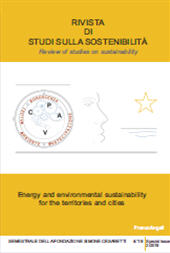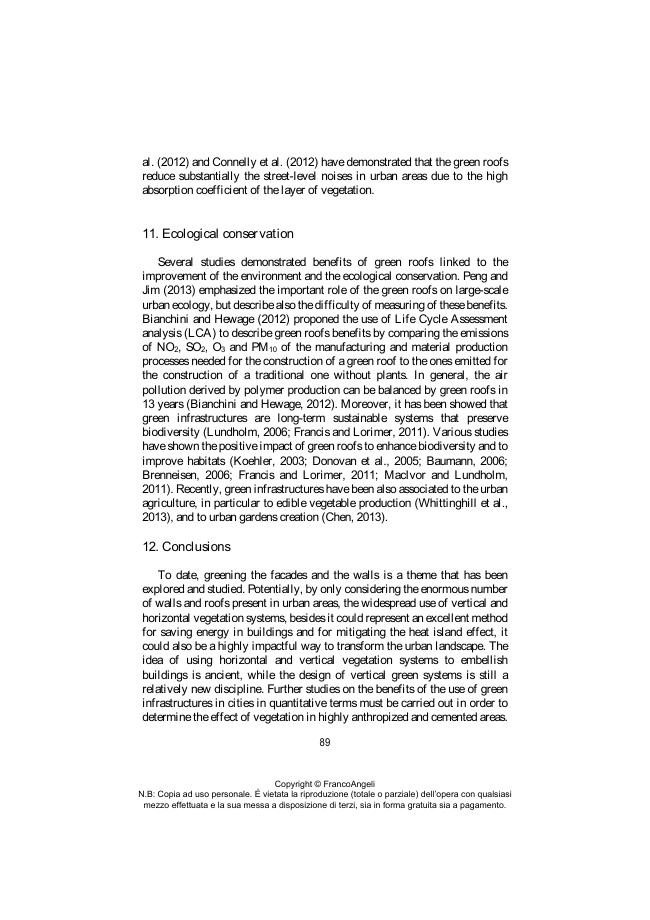Green infrastructures for the energetic and environmental sustainability of cities
79-98 p.
The inexorable extension of urbanization is consuming huge amounts of soil drastically reducing natural vegetation, replacing it with buildings and low albedo surfaces. The changes due to the different thermal properties of surface materials and the lack of evapotranspiration in urban areas lead to a phenomenon known as "urban heat island effect". By reintroducing the vegetation back into the urban landscape, a partnership between nature and cities should be strengthened to create a new sustainable urban environment. Since the outer surfaces of building offer a great amount of space for vegetation, planting on roofs and walls has become one of the most innovative way to provide several environmental services.
Moreover, all the green infrastructures, such as urban gardens or nature areas, that form an important part of cityscapes, could ensure also a thermal isolation and constitute a sustainable energy saving solution for buildings. This work presents a critical review of environmental and potential thermal benefits of green infrastructures in the cities. [Publisher's text].
-
Articles du même numéro (disponibles individuellement)
-
Informations
Code DOI : 10.3280/RISS2019-002-S1006
ISSN: 2239-1959
DISCIPLINES
KEYWORDS
- Urban greening services, urban environment, energy efficiency, energy saving, green infrastructures, nature-based solutions (NBSs)



